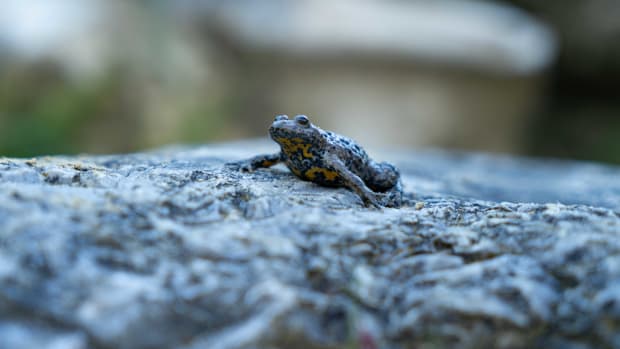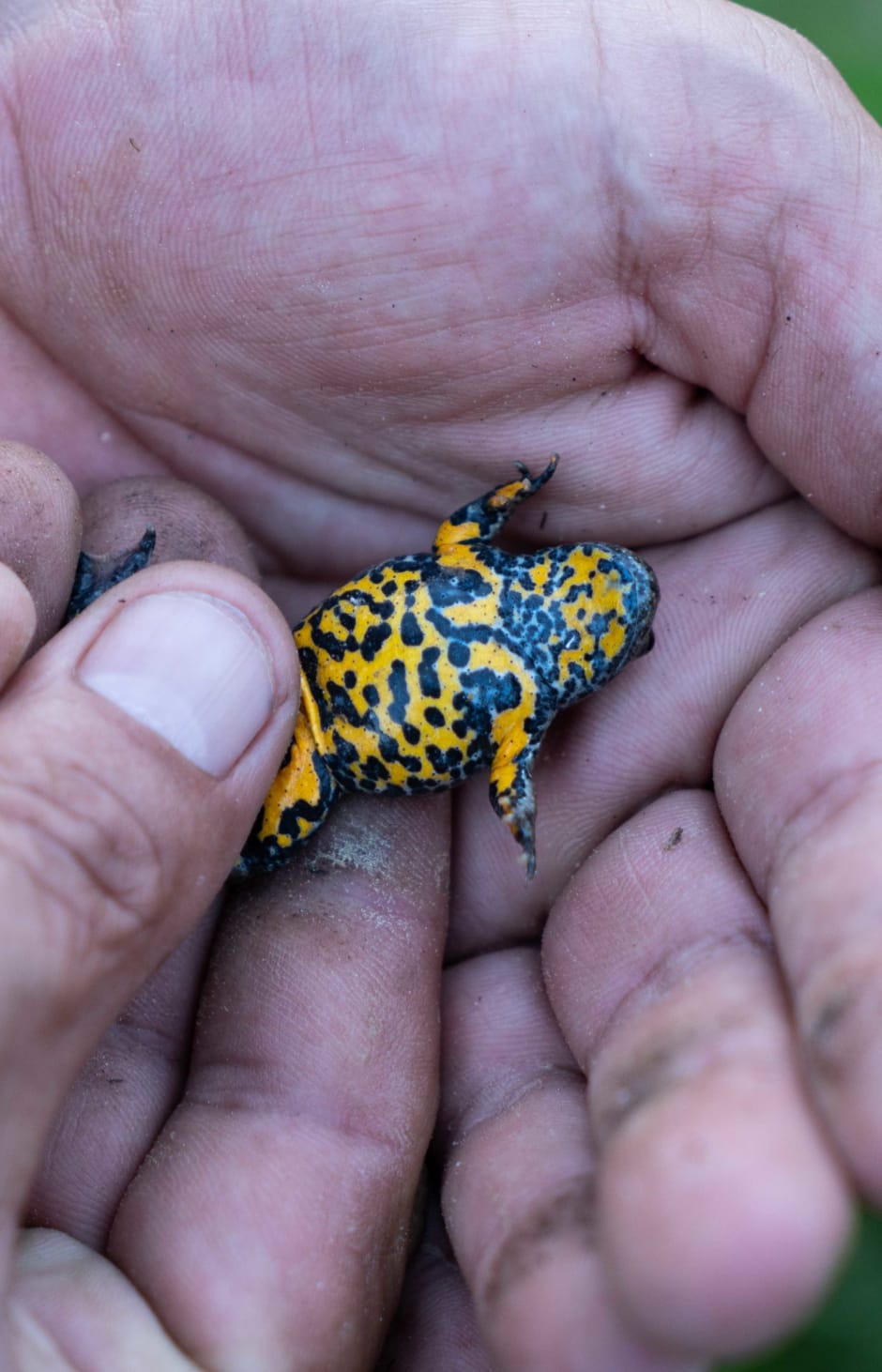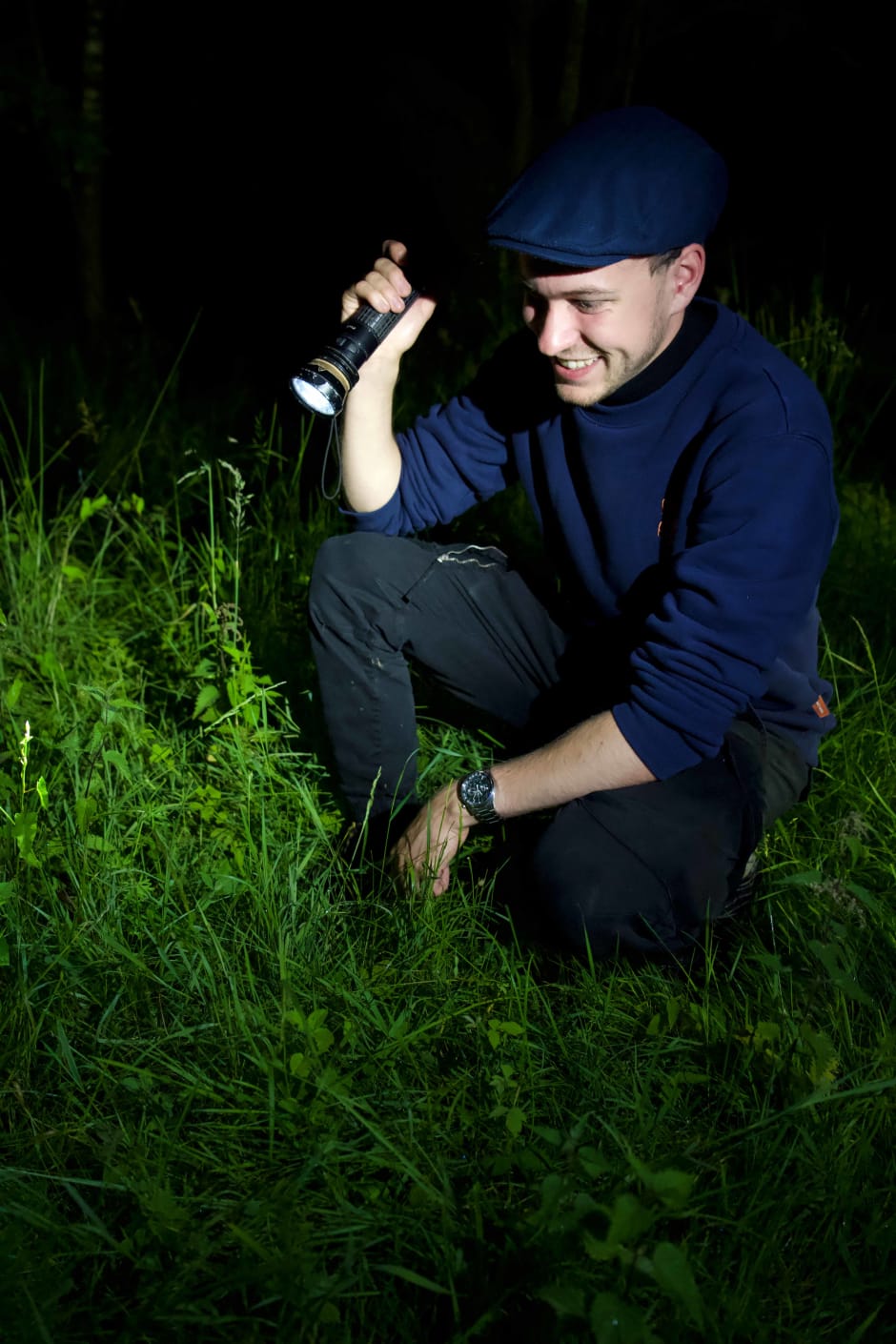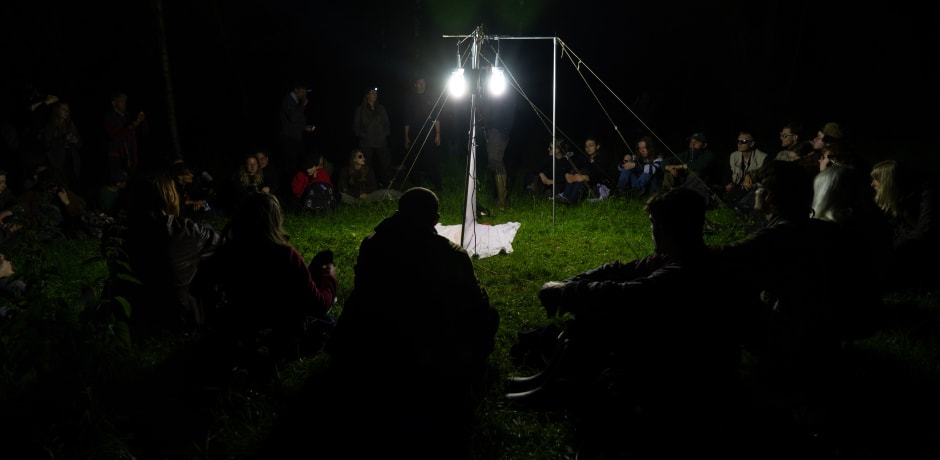
In search of a rare toad in Limburg: “This is utterly magical!”
The Meertensgroeve, Limburg, is home to one of the rarest toad species in the Netherlands: the yellow-bellied toad. Every year, about 50 UvA biology students travel to Limburg to conduct research on the biodiversity of the landscape. One of the highlights is the search for this special toad species and other nocturnal animals.
“I would like to start this evening with silence ... without prayer,” laughs reptile and amphibian expert Edo Goverse, pointing his finger upward. Immediately the circle of some 50 students gathered around him falls silent. “Oeh, oeh, oeh... Oeh, oeh, oeh,” echoes a soft but melodious sound through the Meertensgroeve, a former sand and gravel extraction area in Limburg. Fireflies slowly begin to dance across the unusual chalky grass landscape with puddles and ditches, the ideal environment for the maker of the sound. Is it an owl? The call of a deer? Or something else?
After sand and gravel extraction at the Meertensgroeve, a local motocross club used the site. This created barren landscapes and temporary puddles, ideal breeding grounds for toads such as the yellow-bellied toad. When motocrossing was banned, the population of yellow-bellied toads and midwife toads collapsed. The terrain slowly turned into grassland and forest, eliminating their habitat. Horses and goats were used to control the overgrowth, which helps somewhat, but better solutions are still being sought to preserve the toad population.
For 30 years, a group of first-year biology students has been traveling with ecologists from the Institute for Biodiversity and Landscape Dynamics (IBED) of the UvA to Limburg to spend a week researching the plants and animals found in the hilly landscape. A fixed part of the week’s program is the evening excursion featuring one of the rarest toad species in the Netherlands as “guest of honor”: the yellow-bellied toad.
The owl-like sound belongs to this toad species. “The species is found only in the stream valley area of southern Limburg,” Goverse says while holding up a large book with a full-page photo of the amphibian. “As you can see, its belly is poisonous yellow with black spots - extremely poisonous. It won’t kill you, but avoid touching your eyes or any open wounds should you pick one up, as it can irritate you for days,” Goverse says, and then gives a wink to one of his fellow teachers.

As night falls, the students listen to the ecologist’s account of the toad’s demise and reappearance in the quarry. In a few moments, the students will be allowed to wander the grounds in search of the unusual toad species. There are also other creatures to look out for, such as the midwife toad, the hazelworm (legless lizard), and various newts. “Go on a search, as soon as it’s pitch dark we’ll gather at the top of the quarry to end the day together and look at moths and other insects,” Goverse finishes.
With flashlights, the students fan out in groups across the quarry. But not everyone takes the task equally seriously. One group determinedly searches for toads and salamanders around the puddles, and another wanders off into the hills. “Look! Cannabis Sativa,” jokes one of the students.
The search for the yellow-bellied toad is not easy for everyone. “We haven’t caught any toads yet. We hear them but don’t see them,” laughs one group of students slightly uncomfortably. “We did find a field wasp nest and saw all sorts of things swarming in the tall grass,” says student Zina Lüschen (23). “This is completely different from looking at pictures in the lecture hall.”

Biology student Bas Kuypers (19) has more success with his flashlight. “The place is full of toads. If you follow the sound first, look in the water between the reeds, and then wiggle your hands a little in the pool, you’ll find them! I have to wash my hands well at this rate.” As he talks passionately about his search strategy, he is interrupted by the figure of a fox darting through the bushes in the distance. “This is utterly magical! This is what warms my biologist heart.”
Meanwhile, it begins to grow darker and colder. An eerie mist rises from the puddles, and students emerge from all corners of the Meertensgroeve, abandoning their search for the yellow-bellied toad and walking toward a bright light.
“You found the light!” laughs Goverse, who has once again become the center of a circle of students, with a stretched sheet in the middle. “These are not household lamps,” Goverse continued. “They are old-fashioned spiral lamps that emit extra UV light. Not good for your eyes, in other words. Besides attracting you, they also attract all kinds of moths and other insects. Who knows, if you stay until the end we might see a pintail, a butterfly the size of a small bat.”
After hours, some students leave the Meertensgroeve in vain, without having caught a yellow-bellied toad or pintail. Yet there is little sign of disappointment. Tired, cold, and chatting softly, they walk with their headlamps dimmed along the forest path back to the inn, to their beds.


